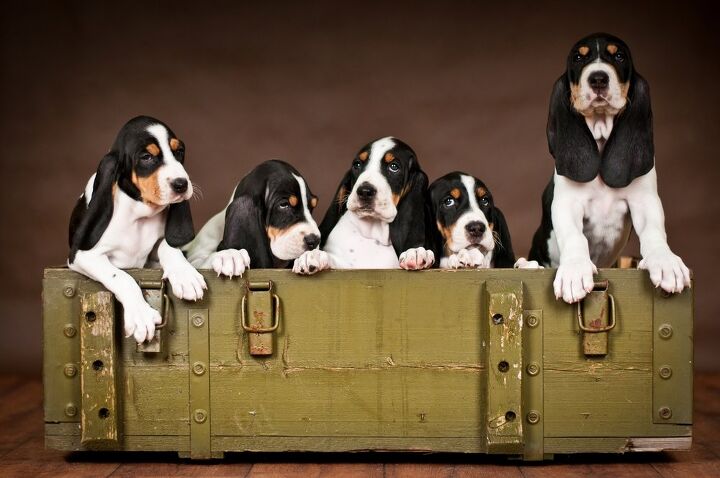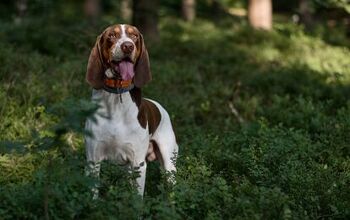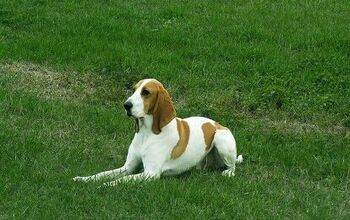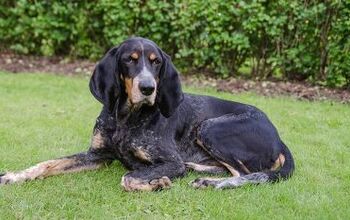Bernese Hound


About Bernese Hound
Also known as the Berner Laufhund and the small Bernese Hound, this breed was developed in Switzerland for both its scenting ability and its use in the sport of shoots. These dogs are closely related to the other three Swiss hounds, but they are unique in that they come in two coat types – wirehair or smooth. Though they were developed for hunting small game, these dogs are also intelligent and trainable enough to be used in dog sports.
This breed was developed in Switzerland for both its scenting ability and its use in the sport of shoots.
One of four Swiss Hounds, the Bernese Hound is also known as the Berner Laufhund and the small Bernese Hound. This breed was developed by Swiss breeders to fill a specific niche. In addition to being bred for its scenting ability and its skills in hunting small game, the Bernese Hound is also an excellent breed for dog sports including the sport of shoots. The breed was developed during the late 1800s as a smaller, short-legged version of the medium-sized Swiss hound.
The Bernese Hound is one of four Swiss hounds, related to the Lucernese Hound, Bruno Jura Hound, and the Schweizer Laufhund.
The Bernese Hound is a small- to medium-sized breed that should fare well on a high-quality adult dog food diet that is rich in protein with moderate fat, ideally from animal sources. If you choose to train your dog for hunting or dog sports, he may fare better on an active or working breed formula. These formulas are rich in protein with higher fat content to meet the dog’s higher needs for exercise.
The Bernese Hound is an intelligent and trainable breed but can be stubborn or independent at times.
The Bernese Hound was specifically developed for hunting small game and for participating in the sport of shoots. As such, he is an intelligent and trainable breed but he can be a bit stubborn or independent at times, particularly when kept by an inexperienced dog owner. This breed responds well to positive reinforcement training but they do need a firm and consistent hand in leadership. They should be started with training as early as possible, and early socialization is also a must – particularly if you plan to keep him as a companion pet.
The Bernese Hound is a small to medium-sized breed standing 13 to 17 inches tall and weighing 18 to 33 pounds.
The Bernese Hound was developed specifically for hunting small game and for participating in the sport of shoots. As such, these dogs are not typically kept as companion pets but they can certainly do well in this capacity provided their needs are met. The Bernese Hound is definitely not the right dog for a condo or apartment – they are better suited to homes with a large yard or a rural area where they are free to run. Their intelligence and their high needs for exercise puts them at risk for developing problem behaviors if their exercise needs are not met and they also do well with training for various dog sports. As companion pets, however, they can be very friendly and loyal with family, though they tend to fare better with experienced dog owners than first-time dog owners. These dogs are generally good with children and other pets, though they can be a bit vocal – especially if left alone too long.
The Bernese Hound is generally a very healthy breed by nature, though all dogs are prone to certain health problems. Some of the health problems to which the breed may be prone include ear infections, elbow dysplasia, patellar luxation, skin allergies, and drug sensitivities.
The average lifespan for the Bernese Hound is 10 to 12 years.
The Bernese Hound is a dog developed for hunting, so they are a very active breed with high needs for exercise – they will not do well in an apartment or a small house without a yard. In addition to training for hunting, this breed will also do well with dog sports as an extra form of energy.
As companion pets, The Bernese Hound can be very friendly and loyal with family.
The Bernese Hound is not recognized as a separate breed but as one of four varieties of Swiss Hound along with the Lucernese Hound, Bruno Jura Hound, and the Schweizer Laufhund.
The Bernese Hound is unique from the other small Swiss Hounds because it comes in two coat types. The short-haired Bernese Hound has a short, smooth coat with an undercoat that is a little denser. The wire-haired variety has a harsh coat with no undercoat. Both coat types are typically tricolor – a dog with a white base with large black spots and tan markings over the chest, cheeks, and eyebrows.
The average litter size for the Bernese Hound is 4 to 8 puppies. As a small- to medium-sized breed, puppies generally reach their full size quickly so it is important to provide them with a high-protein diet to build lean muscle mass. Switch to an adult recipe after 12 months. All puppies should be started with training and socialization as early as possible.
Photo credit: Nikol Mansfeld/Shutterstock; cynoclub/Shutterstock

Kate Barrington is the loving owner of two cats (Bagel and Munchkin) and a noisy herd of guinea pigs. Having grown up with golden retrievers, Kate has a great deal of experience with dogs but labels herself a lover of all pets. Having received a Bachelor's degree in English, Kate has combined her love for pets and her passion for writing to create her own freelance writing business, specializing in the pet niche.
More by Kate Barrington

























